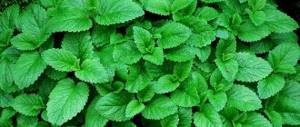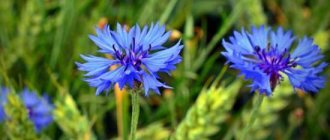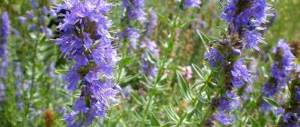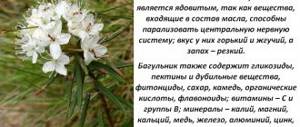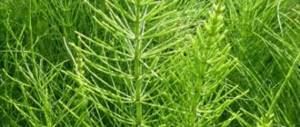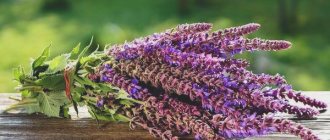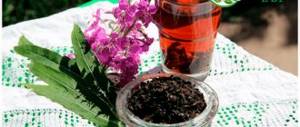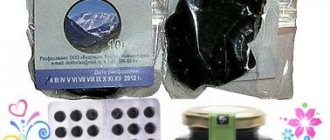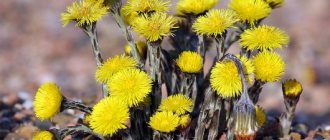Description, reproduction and distribution area of chickweed
An annual or biennial herbaceous plant of the clove family (Caryophyllaceae), up to 30 cm in height.
The stem is weak and thin, lying or ascending, branched, foliage is even and sparse.
Leaves are ovate, short pointed; the upper ones are sessile, the lower ones on petioles.
The flowers are small, terminal or axillary, with white bipartite petals on long pedicels. The buds do not die off in winter.
The fruit is an oblong capsule with numerous round or kidney-shaped seeds.
It blooms in May - September, the fruits ripen in July - October.
Propagated by seeds. When they germinate in the fall, the plant overwinters and completes its development the following year.
The lifespan of the plant is generally 3 to 4 weeks.
Chickweed is widespread in the European part of the CIS, the Caucasus, the Far East, Western and Eastern Siberia.
It grows in weedy places, along forest edges, along the banks of rivers and streams.
A harmful weed of garden crops.
This plant got its name (woodlouse) because it is always wet, as it absorbs water not only with its roots, but also with its stem.
Places and rules for collecting chickweed
Chickweed is distributed throughout the world. It tends to grow in areas with cold or temperate climates. It can be found in forests, meadows, along banks and river mouths, as well as in highlands. It often colonizes fields and garden plots, causing a lot of trouble for gardeners. It is collected as a medicinal raw material from late May to early October. If the grass grows in the garden, then it can be harvested during the weeding process.
Also read: Ruscus: description of species and medicinal properties
The collected raw materials are laid out on cloth or paper in a well-ventilated place protected from the sun (shed, shed) and mixed regularly. You can also use a dryer with a temperature not exceeding 40 degrees. It is recommended to chop the finished herb and package it in glass containers or paper bags and place it in a dry, dark place, where it can be stored for no more than a year. Subsequently, the raw material loses its beneficial properties.
Medicinal properties of chickweed
Remedies prepared from chickweed herb have anti-inflammatory, vitamin and antiseptic effects, improve cardiac activity and metabolism, relieve pain, strengthen the nervous system, resolve benign tumors, stop bleeding and disinfect purulent wounds. Traditional healers recommend applying steamed herbs to sore spots for rheumatism, gout, radiculitis, and sprains. The juice, sweetened with honey, is taken for diseases of the gastrointestinal tract. The decoction is rubbed against aches in the joints, used for leucorrhoea, and applied to wounds.
Features of woodlice
What is this herb? Where to look for it in nature? How did she deserve such “honor” in folk medicine? For what diseases is it effective and does it have any contraindications?
Kinds
About 50 species of this plant are found on the territory of Russia (some sources give a different figure - 200 species). Chickweed, or chickweed, is the most common and valuable species, which is most often used as a medicinal raw material. What other varieties are known in folk medicine?
- Chickweed. People call it soapy, drunken grass. In addition to the European part, it is found in Siberia, the Caucasus and Central Asia. Unlike woodlice, the height of its stem can reach 40 cm. As a perennial weed, it colonizes fields, often grows in meadows, in damp forests, and loves the banks of reservoirs. It is a poisonous plant, so it is taken internally with great caution. The plant stimulates the functioning of the gonads in men and women. It is often used as a heart medicine, as well as for metabolic disorders and thyroid diseases. Externally - for abscesses. Useful for older people, acts as a tonic and restorative.
- Starwort is rigid-leaved, or lanceolate. No matter what people call this plant - chistets, kostenets, asterisk, cloves, hemp, absinthium, crane's grass, living, heart, love grass. A perennial plant, it also likes moist soil. More often it can be seen in forests and bushes. Refers to poisonous plants. In folk medicine, the aerial part and fresh juice are used. Useful for skin diseases - ulcers, scabies, non-healing wounds, bedsores, abscesses. Lotions and compresses are made from it. Decoctions, infusions, and fresh juice are taken internally. It relieves inflammation of the respiratory system, gastrointestinal tract, rheumatic pain, and helps with diseases of the cardiovascular system.
- Dubravnaya, or forest. It is poisonous, the height can reach 60 cm. It can more often be found in oak forests and other deciduous forests - in the European part of Russia. But this species is also common in North America (especially Mexico), the Caucasus, and Asia Minor. They treat cancer and fungal skin infections.
- Bunge. Perennial grass of high mountain, forest regions. Also found in meadows, river valleys of Siberia and the Far East. Widely used in folk medicine externally as an antiseptic, hemostatic and wound healing agent. Taken orally for diabetes, allergies, diarrhea, and joint diseases.
Not only a healer, but also a pest
For farmers, woodlice is a spring, annual weed that is difficult to control manually. The plant emerges in early spring and develops quickly. If it is not weeded out in time, it forms a beautiful but harmful carpet for useful seeds. Carrots, which take a long time to sprout, suffer most from chickweed. Woodlice loves moisture and often settles in vegetable beds with abundant watering. After weeding, it is not recommended to leave the weed in the beds; it is removed so that the seeds do not fall off (there can be about 10 thousand or more of them in one plant). Seeds can lie in the soil for several years and germinate safely every spring. Also, an uprooted plant will take root again if it comes into contact with damp soil.
However, some varieties of this grass are grown as an ornamental plant for their elegant flowers and continuous, beautiful carpet. It decorates flower beds and rock gardens.
Range of average chickweed
Where does woodlice grow? The plant loves a temperate climate and takes root well in northern regions. Some varieties can be found in high mountain subtropics. Most of the species are found throughout the European part of Russia, some take root in the Far East and Siberia. Woodlice feels good in dark places and moist soils. It grows near homes, in vegetable gardens and summer cottages. In the wild, its favorite places are damp glades and forest roads.
Botanical characteristics of woodlice
This is an annual herbaceous plant. Its peculiarity is the formation of loose turf (carpets). The root system is weak, shallow, branched. The stems are thin, low (up to 10 cm), but at the same time they branch well and grow, covering the ground. The leaves are dark green; the petioles have hairs with which the plant absorbs moisture. Hence the name (due to the great love for water) - woodlice. The inflorescences of the plant are loose, few-flowered. The flowers are snow-white, small, star-shaped. It begins to bloom in May, blooms all summer, even in late autumn you can see delicate white stars on the green carpet.
There is another version of the origin of the name. A folk sign says: if the flowers of a plant have not opened in the morning after sunrise, it means it will rain. The woodlice plant responds to changes in humidity and air temperature. Gardeners jokingly call her the “rain predictor.”
Blank
It is preferable to collect grass in the spring, from the moment of flowering until the end of May. Collect the entire above-ground part of the plant, except for the roots. There are useful substances in the stems, leaves, and flowers. Dry, laying out in a thin layer, under a canopy. Do not allow sun exposure to raw materials. Dry grass is easily crushed by hand, after which it is packaged in linen bags. It can also be transferred to glass or porcelain dishes. Shelf life: 1 year.
Medicinal uses of chickweed
Aboveground part. Fresh - for diseases of the liver, kidneys, lungs, heart; as a diuretic and laxative.
Externally - among the Nanais for baths with swelling of the legs, for the treatment of diathesis. In folk medicine, steamed herbs are applied to sore spots for rheumatism, radiculitis, and sprains; rub the decoction for aches in the joints and rheumatism; compresses are applied to wounds.
Infusion (orally) - for hemoptysis, hemorrhoids, pain in the heart, hepatitis, cholecystitis; infusion (in the form of baths) - for pain in the legs, skin rashes, eczema, scrofula, for washing festering wounds, ulcers.
Juice - for general weakness, weight loss, vitamin deficiencies, functional heart diseases, cholecystitis, hepatitis; externally - for washing inflamed eyes, in the form of hot lotions - for rheumatism, radiculitis, aches.
The essence from the fresh plant is used in homeopathy.
In Europe it is used for tumors of various locations.
In Chinese medicine - as a pain reliever for gastrointestinal diseases, constipation, and also as a mucous and expectorant.
Types of chickweed
Currently, about 200 plant species have been found growing in the wild. The most common and well-known of them include the following varieties.
Chickweed
Chickweed (Stellaria graminea) is characterized by tetrahedral stems about 40 cm in length. The pointed foliage with rough edges is up to 5 cm long and up to 4 ml wide. Lush inflorescences consist of a large number of small flowers. The plant is used for medicinal purposes, but is also poisonous.
Chickweed
Marsh chickweed (Stellaria uliginosa) has highly branched, lodging stems from 10 to 40 cm in height. They are covered with small foliage from 5 to 15 mm in length. In folk medicine, it is recommended only for the manufacture of products for external use.
Chickweed
Chickweed (wood louse, woodlice)
Chickweed (Stellaria media) is the most common and useful species of chickweed. Its creeping stems reach 10 cm in length. They are covered with delicate small egg-shaped leaves. It appears in early spring and is used as an ingredient in vitamin-rich salads and snacks. An interesting feature of Stellaria medium is its ability to predict weather forecasts. If its flowers do not open in the morning, it means that rain should be expected during the day.
Chickweed Bunge
Bunge (Stellaria bungeana) is the largest species of this plant. Its stems reach 50 cm in length. They are pubescent and covered with pointed, broadly lanceolate foliage. Its length ranges from 3 to 10, and its width from 2 to 4 cm. Like the average chickweed, its young greens before flowering can be used for food.
Also read: Sarsaparilla (smilax): medicinal properties and medicinal uses
Forest chickweed (oak forest)
Chickweed (Stellaria nemorum) is a completely pubescent plant. It has shoots from 10 to 40 cm long. Its heart-shaped foliage has jagged edges and is pointed at the end. This species belongs to poisonous plants.
Forest chickweed (oak forest)
Medicines, method of using chickweed average and dose
It is not used in the manufacture of pharmaceutical drugs.
- Infusion of chickweed herb (woodlice): 1 tablespoon of raw material is poured with 200 ml of boiling water, the vessel is closed with a lid and left overnight, then filtered. Take 1/4 cup 4 times a day before meals.
- Infusion of chickweed (woodlice) herb for baths: 200-250 g of raw material is infused in 1 liter of boiling water for 2 hours, then filtered and poured into the bath.
- Decoction of chickweed herb (woodlice): 200 g of fresh raw material is poured into 1 liter of boiling water and boiled for 10 minutes, cooled at room temperature, then filtered.
- Chickweed (woodlice) juice: take 1/2-1 teaspoon of juice with an equal amount of honey in warm water 4 times a day.
- You need to take 1 tablespoon of medium chickweed raw material and pour a glass of boiling water. Infuse the resulting mixture for 4 hours, then strain. Dosage regimen: 4 times a day (3 is possible) 50 grams. It is recommended to take the product for arthritis.
Contraindications and possible side effects of chickweed.
Woodlice collected from calcareous soils can cause allergies - redness of the skin and itching.
Description of the plant
In general, there are about 200 species of chickweed in nature, and this grass is found on all continents, preferring cool climates, although there are varieties that are more suitable for high-altitude subtropical regions. Many different species of chickweed grow in the mountainous regions of China. Some of the varieties, due to their beautiful flowers or leaves, are bred as ornamental plants.
So, chickweed is average, chickweed (or whatever it is called) is always an annual. Its stem is cylindrical, creeping, its height can be up to 10 cm. The leaves of chickweed are pointed, ovoid in shape. The flowers resemble small stars - hence the name. They are usually white, but less often they may have a slightly greenish tint. The plant blooms from May to August. And after flowering, fruits are formed on it in the form of a box with many rounded seeds.
Interestingly, this herb can predict the coming of rain. There is no magic here, everything is explained by ordinary botanical characteristics. It’s just that this flower is very sensitive to the slightest changes in humidity or air temperature. So during the summer months, if the chickweed corollas in the garden have not opened before 9am, it will most likely rain during the day.
In appearance, this plant differs from other representatives of its family. Bunge's chickweed looks similar to woodlice, and this is mainly due to the ovoid leaves of small flowers, since its stem is much higher. Moreover, this herb has its own beneficial properties, which differ from the properties of woodlice itself. The remaining varieties have even less similarity.
Thus, chickweed (also called owl's chickweed) is a perennial with deep but thin rhizomes. It is distinguished by an erect stem that can grow up to 60 cm in height. The flowers of this plant are also white and shaped like stars, but larger than those of the gooseberry. The main difference is not in appearance, but in the characteristics of the chemical composition. Oak chickweed is a poisonous plant. Its tincture cannot be taken as an internal remedy. Although it is a fairly effective medicine for fungal infections of the skin, it is used exclusively for lotions.
Preparing a sleigh in the summer: options for frost from the garden
Composition of woodlice
It is no coincidence that woodlouse found its use in folk medicine. One can only envy such a quantity of useful substances as this plant has. The herb contains:
Using a plant with such a rich composition for medicinal purposes, you can easily replenish the lack of vitamins, nutrients and microelements in the human body, as well as get rid of many diseases.
Description
Woodlice (chickweed) is an annual plant with a branched stem creeping along the ground, on which oblong-rounded leaves are located.
The stem is covered with fine hairs, and on the edges of the leaves there are cilia, when touched, moisture is felt, hence the name woodlice.
When flowering, white inflorescences are formed, and the flowers themselves resemble small stars in appearance, hence the second name - chickweed.
Also check out these medicinal annual plants: sunberry, safflower, quinoa, oak sage, datura, borage. After prolonged flowering (from May to August), fruits appear in the form of dark brown boxes that contain many seeds. The seeds ripen from July to October and during this period the capsules periodically open.
The main places of growth are farmsteads, orchards, vegetable gardens, banks of streams and rivers, roadsides, forest edges. Ideal conditions for the growth and development of this plant are provided by moist soil and a location next to an open body of water.
You can see what woodlice grass looks like in the photo below, but we’ll find out what medicinal properties it has, and whether there are any contraindications to its use.
Did you know? You can predict the weather by the colors of woodlice. If they have not opened by nine o'clock in the morning, it means it will rain during the day.
Useful properties and uses of woodlice
For fundamental medicine, chickweed is not yet of interest, but is often mentioned in folk medicinal recipes and homeopathy. This medicinal herb contains a lot of carotene, vitamin C, organic acids, minerals (Mg, Fe, Cu, etc.), wax, essential oils, lipids, tanning components, saponins, etc. Infusions, decoctions and lotions from wood lice used as an expectorant, bile and diuretic. A good antiseptic and pain reliever. Tones and helps in the treatment of wounds to stop bleeding.
With the help of chickweed (woodlice), diseases associated with nervous system disorders, cardiovascular diseases, and blood pressure regulation are treated. This herb is contraindicated in patients prone to hypotension.
Contraindications to the use of chickweed
Allergy sufferers should take chickweed with caution, because it can provoke a severe allergic reaction. If a person individually cannot tolerate the plant, he should refuse it.
So, chickweed, despite being a weed, has many medicinal properties - it is an excellent remedy for stopping blood, it has antimicrobial, anti-inflammatory, wound-healing, analgesic, cardiac, sedative and vitaminizing effects. With the help of this plant you can cure heart disease, relieve swelling, and it is especially good to take baths. Chickweed will help get rid of nervous exhaustion; it can be used to treat abscesses, burns, wounds, and acne. For benign and malignant tumors, compresses with chickweed can be used. In spring, it is best to drink chickweed juice, this way you can protect yourself from hypovitaminosis.
Description of chickweed
Chickweed can be found in the Northern Hemisphere; in Russia it is considered a weed. The plant has a thin root and can be annual or biennial. The best place for chickweed to grow is in shady areas and flattering edges. Most often you can find grass in the Caucasus, Siberia, and the Far East. This plant reproduces using seeds. Chickweed loves moisture, it can absorb it not only with the help of the root, but also the stem. How to collect and prepare chickweed? For medicinal purposes, it is best to use chickweed. It needs to be harvested when the plant is blooming. Then dry thoroughly in the sun for up to 4 hours. Then transfer it under a canopy or to a well-ventilated room and spread it out in a thin layer. You can also dry it in a dryer, the temperature should not exceed 40 degrees. Store the herb for up to one year.

